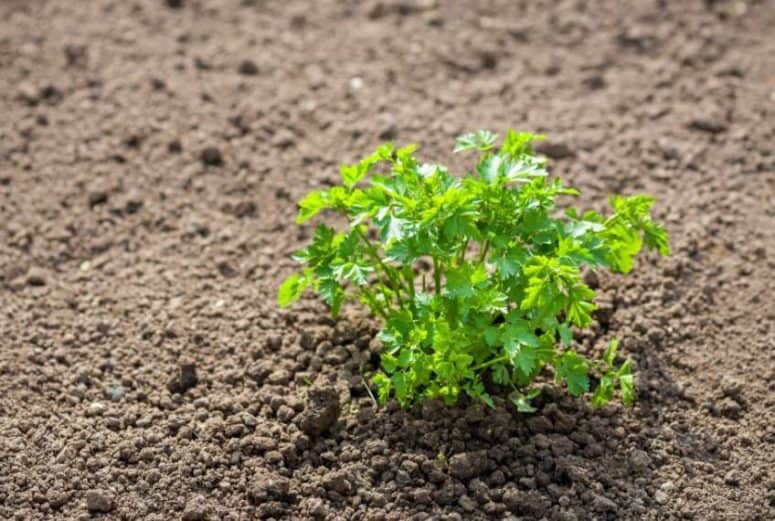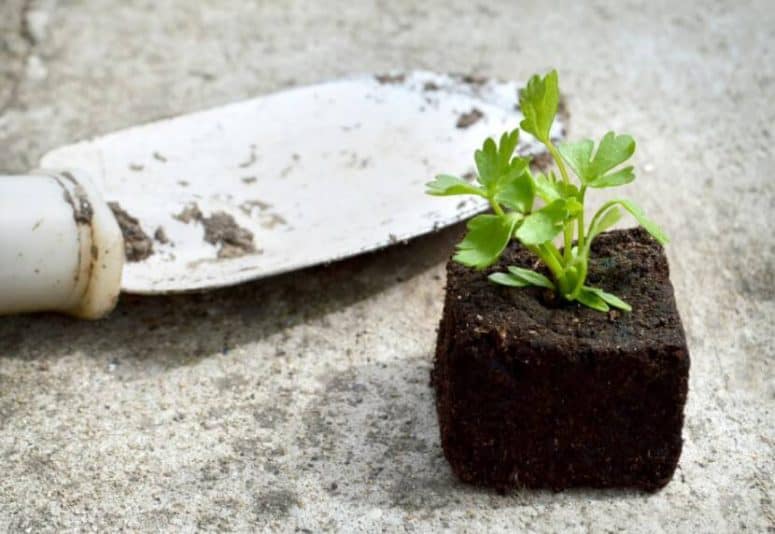Parsley, the ultimate garnish for dishes, is a biennial herb commonly cultivated as an annual. Belonging to the celery family, parsley is renowned as one of the most popular culinary herbs.
Its taste is refreshingly vibrant, capable of enhancing the flavors of soups with minimal reliance on salt. The freshness of parsley also makes it a fantastic complement to salads and sauces.
The distinct feature of parsley lies in its lush green leaves, which bear a resemblance to miniature maple leaves and possess a pointed shape. There are different varieties of parsley, with curly and flat parsley being the most well-known. Both types offer equally delightful flavors and vibrant colors, but many chefs prefer the flat variety due to its easier chopping process.
Cultivating parsley at home brings numerous benefits, as this versatile herb can be used in a wide range of dishes. However, parsley offers more than just culinary pleasure—it contains essential nutrients such as vitamin A, vitamin C, and vitamin K, known for their antioxidant properties that support overall immune health. The combination of deliciousness and health benefits makes parsley even more enticing.
Fortunately, growing parsley is a relatively straightforward task, even for those new to gardening. Whether you’re a beginner or experienced gardener, our ultimate guide on growing parsley at home will provide you with the necessary insights.
How to Grow Parsley

When it comes to growing parsley, there are several methods you can choose from. The three most common approaches are growing parsley from seeds, planting it through cuttings, or layering. Each method has its advantages.
Growing parsley from seeds is a cost-effective option that allows you to cultivate multiple parsley bushes. However, it requires patience as the seeds take some time to germinate. To aid in the germination process, using a fish emulsion fertilizer can be beneficial.
On the other hand, growing parsley from cuttings or layering is a faster and more convenient method. This involves obtaining stems from established parsley plants, which are often available at nurseries. Choosing this method saves time and eliminates the need to wait for germination, making it particularly appealing, especially for beginners.
Regardless of the method you choose, providing the right environmental conditions is crucial. Ensure your parsley plants have access to sufficient water, good quality soil, and consider applying monthly fertilizers to promote healthy growth. Regular harvesting of the leaves will encourage the plant to produce new foliage continuously.
Indoor or Outdoor?

Soil

Light
Similar to other herbs, parsley thrives in full sun conditions. It can be grown successfully in both full sun and part sun exposure. If you choose to grow parsley outdoors, ensure that it receives ample sunlight throughout the day.
For indoor cultivation, it’s important to select a container and position it in the sunniest spot in your house. While sunlight from windows can be sufficient for parsley growth, it’s worth noting that plants may grow at a slower pace compared to outdoor growth. This is because the window glass can reduce the amount of light reaching the parsley plants.
To promote optimal growth indoors, consider using a fluorescent light. Position the light source approximately two inches above the leaves of the parsley seedlings. This will provide them with the additional light they need to thrive.
Water
When it comes to watering parsley, it’s important to follow basic herb care guidelines. Avoid overwatering the soil, as excessive moisture can lead to the development of mildew. Instead, water your parsley with a water-soluble plant food to encourage abundant leaf production.
Parsley is known for its adaptability and can tolerate drier conditions better than waterlogged soil. However, it’s still crucial to keep the soil moist. If you notice that the soil has dried out, make sure to provide it with adequate moisture. Avoid both excessive watering and allowing the soil to become too dry. Striking a balance is key to maintaining healthy parsley plants.
Temperature
Parsley is a hardy herb that can tolerate both drought and cold weather conditions, including winter. However, it’s important to note that parsley may become bitter if exposed to extremely cold temperatures. While it can withstand chilly climates, prolonged exposure to freezing temperatures can affect its flavor. It’s best to provide some protection or bring potted parsley indoors during severe cold snaps to ensure its optimal taste and quality.
Fertilizer
For healthy and thriving parsley plants, it’s beneficial to regularly fertilize them with organic matter such as well-rotted manure or aged compost. These types of fertilizers not only provide essential nutrients to the soil but also help retain moisture, ensuring the parsley plants receive adequate hydration. By enriching the soil with organic matter, you can promote robust growth and enhance the overall health of your parsley crop.
Harvesting
Once your parsley has reached a bushy height of approximately 6 inches, it’s time to start harvesting. To harvest parsley, carefully cut the entire stems from the base of the plant. This method encourages new growth and ensures a continuous supply of fresh parsley. It’s important to avoid cutting more than one-third of the leaves at a time, allowing the plant to maintain its vitality. By following these guidelines, you can enjoy a bountiful harvest of parsley while promoting its ongoing development.
Troubleshooting the Pest
Certain herbs like fennel, dill, and parsley tend to be a favorite food for caterpillars, particularly those of the swallowtail butterfly. While these worms may consume a significant portion of the parsley leaves, they do not pose a threat to the plant’s survival.
In fact, some individuals intentionally plant ample parsley to attract and enjoy the sight of beautiful butterflies in late summer or fall. Planting parsley outdoors can be beneficial for attracting butterflies to your garden.
However, one pest that you should be mindful of is the whitefly, which can be problematic for parsley. To combat whitefly infestations, you can spray the leaves thoroughly with a solution of insecticidal soap, ensuring complete coverage underneath the leaves.
By taking these measures, you can both appreciate the presence of butterflies in your garden and effectively manage the potential threat of whiteflies to your parsley plants.
Conclusion
Parsley, being a versatile herb, can adapt well to various watering conditions and temperature ranges. It is important to maintain a regular watering schedule, ensuring that the soil doesn’t dry out completely. Avoid both overwatering and allowing the soil to become excessively dry, as these can be detrimental to the growth of parsley, whether you’re starting from seeds or cuttings.
To promote healthy growth, it is beneficial to fertilize parsley with organic matter or aged compost. These natural fertilizers provide essential nutrients that enrich the soil and enhance the overall quality of the herb.
By following these guidelines, you can cultivate thriving parsley plants and enjoy their versatile culinary applications.